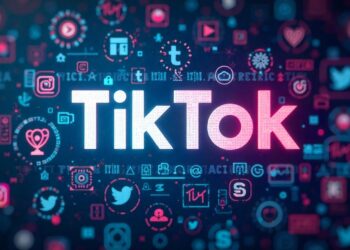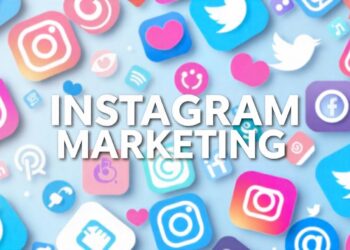LinkedIn has evolved from a simple professional networking site to one of the most powerful B2B marketing platforms available. With over 750 million professionals and decision-makers on LinkedIn, it offers an unmatched opportunity for businesses to connect with potential clients, showcase expertise, and drive lead generation. This guide will walk you through each step to harness LinkedIn effectively for your B2B success.
Optimize Your LinkedIn Profile and Company Page
Before you begin any marketing efforts, it’s essential to have a solid foundation on LinkedIn. Your profile, along with your company page, is often the first impression you make on potential clients.
# Create a Compelling Profile
For individuals in B2B, having a polished, complete LinkedIn profile is crucial. Make sure to:
- Use a professional profile photo that conveys trust.
- Write a clear, engaging headline that speaks directly to what you offer.
- Optimize your summary and experience sections with relevant keywords.
# Set Up and Optimize Your Company Page
A LinkedIn Company Page allows businesses to provide a professional, branded experience. For B2B marketing, ensure your page includes:
- A high-resolution logo and banner image.
- An engaging “About” section with clear and concise information.
- Regular updates to showcase industry insights, new products, or company achievements.
Define Your B2B Marketing Goals
LinkedIn marketing can serve a range of purposes. Identifying your goals early will help streamline your strategy and tactics. Common B2B goals on LinkedIn include:
- Brand Awareness: Increase visibility by sharing valuable, consistent content.
- Lead Generation: Use LinkedIn’s advertising and networking features to capture qualified leads.
- Engagement: Cultivate relationships by engaging with comments, shares, and likes on posts.
Each goal will demand a slightly different approach in your LinkedIn strategy.
Develop a Content Marketing Strategy
Content is the backbone of LinkedIn marketing. Sharing relevant and valuable content consistently builds credibility and keeps your audience engaged.
# Identify Content Themes and Topics
Content that works well on LinkedIn often falls into these categories:
- Industry Insights: Sharing updates, data, or trends relevant to your field.
- Case Studies: Highlight successful projects or partnerships.
- Educational Content: Offer “how-to” guides, infographics, or explainer videos.
# Post Regularly and Strategically
Consistency is key on LinkedIn. Posting at least three times a week keeps your brand top-of-mind. Research shows that mornings, particularly on weekdays, are optimal for engagement. Experiment with post types, such as long-form posts, native videos, and carousel documents.
Use LinkedIn’s Advanced Search to Build a Prospect List
LinkedIn’s advanced search features are an excellent way to find potential B2B clients. You can search based on various filters, such as industry, company size, title, and location, to identify ideal leads.
# Save Leads in LinkedIn Sales Navigator
LinkedIn Sales Navigator offers robust search capabilities for B2B marketers. With this premium feature, you can save leads, track their activities, and receive tailored recommendations.
Leverage LinkedIn Groups for Networking
LinkedIn Groups are a valuable, often underutilized tool for B2B networking. Joining groups relevant to your industry or your clients’ industries enables you to connect with potential leads and participate in discussions that establish your expertise.
1. Join Relevant Groups
Find active groups by searching for keywords related to your industry. Once you join, contribute thoughtfully and share insights.
2. Start Your Own Group
Creating a LinkedIn Group dedicated to a specific industry topic can also be an effective B2B marketing strategy. Hosting your own group allows you to lead discussions and establish authority.
Engage with Your Network
Engagement is critical on LinkedIn, especially for B2B marketing, where trust-building is paramount. Simple actions like liking, sharing, or commenting on others’ posts can go a long way in building professional relationships.
1. Respond to Comments on Your Posts
When you post content, engage with those who take the time to comment. A simple “thank you” or a thoughtful response can encourage further interaction and lead to deeper connections.
2. Personalize Connection Requests
When connecting with someone new, send a personalized note rather than the default invitation. Mention why you’re reaching out, making your message specific to the person.
Run Targeted LinkedIn Ads
LinkedIn’s advertising platform is a powerful tool for reaching decision-makers. Unlike other social platforms, LinkedIn ads target audiences based on professional data, such as job title, industry, and company size.
1. Sponsored Content
Sponsored Content ads appear directly in users’ feeds, making them less intrusive. Use this type of ad to promote high-quality content, case studies, or whitepapers.
2. LinkedIn Message Ads
Message Ads, delivered directly to a user’s LinkedIn inbox, allow for personalized messaging. These can be highly effective for lead generation when you have something of value to offer, such as an exclusive webinar or free e-book.
3. Retargeting Ads
Use LinkedIn’s Matched Audiences feature to retarget visitors who have interacted with your LinkedIn page or website. This strategy can help you reconnect with potential leads who didn’t convert the first time around.
Measure and Optimize Your Performance
To ensure your LinkedIn marketing efforts are effective, it’s essential to measure performance and adjust as needed.
1. Use LinkedIn Analytics
LinkedIn Analytics on both personal and company pages provides insights into engagement metrics, follower growth, and audience demographics. These insights help you understand what content resonates with your audience and where adjustments are necessary.
2. Track Key Performance Indicators (KPIs)
For B2B marketing on LinkedIn, KPIs may include:
- Impressions and Reach: Track the number of people who see your content.
- Engagement Rate: Calculate the percentage of people who interact with your posts.
- Lead Conversion Rate: Measure how many connections turn into qualified leads.
Use these metrics to refine your strategy continually.
Nurture Leads Through Thought Leadership
Thought leadership is essential for building trust and credibility in B2B marketing. By sharing insightful content and participating in discussions, you establish your brand as an industry authority.
1. Publish Long-Form Content
LinkedIn allows users to publish long-form articles directly on the platform. Use this feature to share in-depth analyses, industry predictions, or expert opinions.
2. Share Customer Testimonials and Success Stories
Highlighting your success stories reinforces your credibility. Consider posting video testimonials or written case studies to demonstrate your expertise.
Host Webinars or LinkedIn Live Events
One of the most engaging B2B strategies on LinkedIn is hosting events like webinars or LinkedIn Live sessions. These events offer a chance to connect with your audience in real time and showcase your expertise.
1. Plan Engaging Topics
Choose topics relevant to your audience, such as industry trends or practical business tips. Hosting a live event allows for direct interaction and builds relationships with potential clients.
2. Promote Your Event on LinkedIn
Share posts and ads leading up to the event to increase awareness. Additionally, encourage participants to follow your company page for updates on future events.
Conclusion
LinkedIn offers unparalleled opportunities for B2B marketers to reach and engage their target audience. By following these ten steps, you can create a strong presence, build valuable connections, and generate quality leads for your business. LinkedIn marketing success doesn’t happen overnight, but with consistent effort, you’ll build a trusted brand and set the stage for sustainable growth in the B2B space.





